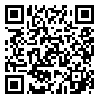BibTeX | RIS | EndNote | Medlars | ProCite | Reference Manager | RefWorks
Send citation to:
URL: http://jdisabilstud.org/article-1-2170-en.html
2- Clinical Psychology, Faculty of Psychology and Educational Sciences, University of Tabriz
Background & Objectives: Obsessive-Compulsive Disorder (OCD) is a psychological disorder that manifests with a variety of symptoms, including intrusive thoughts, obsessive manners, mental employment and practical obsessions. There is no qualitative difference between the thoughts of people with obsessive-compulsive disorder and normal people. However, there is a fundamental difference in the meaning people with obsessive-compulsive disorder have for their thoughts. In this model, it is assumed that dysfunctional beliefs, which are the reference for evaluating obsessive thoughts, are the reason for turning annoying thoughts into obsessive thoughts. Dysfunctional beliefs cause, as the focus of attention on obsessive thoughts increases, to make an effort to avoid and suppress them. Thus, dysfunctional beliefs play an important role in creating and maintaining the symptoms of obsessive-compulsive disorder. They are even said to predict the type and severity of symptoms. Therefore, it is expected that cognitive techniques including cognitive reconstruction, correction of cognitive distortions, along with behavioral techniques for behavioral reconstruction are effective in treating patients with obsessive-compulsive disorder. The present study aimed to determine the effectiveness of cognitive-behavioral techniques in reducing obsessive beliefs in people with obsessive-compulsive symptoms.
Methods: The method of the present study was a quasi-experimental case study with a multiple-baseline design. The present study population comprised individuals with symptoms of obsessive-compulsive disorder, living in Tabriz City, Iran, in 2019. For this purpose, two participants were purposefully selected. They were selected from the people with symptoms of obsessive-compulsive disorder who were referred to Danesh Shahr Clinic of Tabriz considering the inclusion and exclusion criteria. Measurements were made for these two participants in the stages of the first baseline, second baseline, third session, fourth session, fifth session, sixth session, seventh session, last session, and follow-up. Finally, the follow-up was implemented two months after the last meeting. Maudsley Obsessive-Compulsive Inventory (Hodgson and Rachman, 1977), Responsibility Attitude Questionnaire (Salkovskis et al., 2000), Thought Control Questionnaire (Wells & Davies, 1994), Beck Anxiety Inventory (Beck et al., 1996), Intolerance of Uncertainty Scale (Freeston et al., 1994) were used to collect research data. To analyze the data, graphical and graphical analyzes were used, which were judged based on the rise and fall of obsessive beliefs. In addition to graphical and graphical analysis, the recovery percentage formula was used to evaluate the clinical significance of the changes and to objectify the improvement in treatment goals.
Results: The results showed that the effect size of cognitive-behavioral therapy on the variable of attitude to responsibility was 1.98 for the first subject and 2.63 for the second subject. The effect size of treatment on thought control was 2.31 for the first subject and 1.83 for the second subject. The effect size of treatment on anxiety was 2.83 for the first subject and 2.29 for the second subject. Also, the effect size of treatment for intolerance of uncertainty was 2.7 for the first subject and 2.56 for the second subject. These findings indicated that cognitive-behavioral therapy was effective in reducing obsessive-compulsive beliefs in people with obsessive-compulsive symptoms.
Conclusion: Based on the findings of this study, cognitive-behavioral therapy was effective in reducing obsessive beliefs in people with symptoms of obsessive-compulsive disorder. The findings of this study can be used for treatment planning and clinical interventions.
| Rights and permissions | |
 |
This work is licensed under a Creative Commons Attribution-NonCommercial 4.0 International License. |



